When should you be posting on social media? Which days of the week? Which times? How often? Every person involved in marketing a business through social media asks themselves these questions, so I’ve pulled together the latest research into when to post on social media and combined it with advice from my 10+ years of experience to help you always have the answers.
Topics covered
Read this before you look at the data
I’m going to share the latest data about optimal social media posting schedules. Before you look at this data, there are two important things you must take into account.
Your social media posting schedule has to be right for you and your audience

Before I get into the data, it’s crucial you understand that all this data is statistics — it’s all averages and bell curves. That means it’s pretty accurate for many businesses out there, but it’s not going to be accurate for all businesses.
It’s a good place to start, but it may not be right for you and your audience.
As an example, popular wisdom suggests that every business should post lots of images and videos because they capture audience attention and are super engaging. Videos are preferred because they perform better, but images are good too because they’re cheaper to produce. But if your audience is filled with blind people, they’re not going to respond to visual posts.
As a less extreme example, new mums who scroll their Facebook feed when their baby falls asleep on their chest may be interested in watching videos, but only if they can enjoy them muted. They’re not going to risk waking their baby by playing the audio of a social media video. So, if that was your audience, you might post images and exclude video from your strategy.
These are simple examples of how specific audience may not appreciate the same things as the ‘average’ social media user, but they highlight an important message. You should always be sure to test how your social media decisions impact on your social media marketing performance. Just because the average user wants something, doesn’t mean your specific audience wants that thing.
By the same token, don’t feel pressured to do something if it doesn’t work for your business.
For example, if the data shows audiences in your industry love first-person ‘behind the scenes’ videos but you hate being on camera, your videos might come across as stilted and therefore may not be engaging and enticing for your audience. Plus if you were to go ahead and make some anyway, you’d likely grow to dread every video shoot.
Similarly, back in the day, data showed businesses got the best results from Pinterest if they posted 30 posts a day. But many small businesses didn’t have the budget for that many posts. For those that did have sufficient funds for that sort of social media engagement, in most cases, they would have generated a greater return on investment from other activities.
To reiterate, data can give you a good place to start planning your strategy, but what works best for you and your audience may not match up with that data, and that’s ok.
Your social media posting schedule won’t be set in stone
Once upon a time (in 2018), Sunday afternoon was, statistically speaking, the best time to post content to Facebook. Just a few years later (in 2022), and Sunday became the worst day to post Facebook messages. This is just one of countless examples of how changing societal factors can impact on the best day and time to post on social media.
Your audience isn’t set in stone and the way you interact with it over time will change. So, don’t expect to plan out an awesome schedule now and have that be the only time you’ll ever have to think about when you post to social media.
What the data reveals about when businesses should post on social media

Now we’ve got those caveats out of the way, it’s time to share the data you can use to help you optimise your social media schedule. The following information is a summary of data collated from a variety of researchers and analysts (see the references at the end of this post for details) along with expert insights from our own work with clients across a diverse set of industries. It offers a good place to start your investigations into what works for you and your audience.
All platforms and industries
Statistically speaking, the average social media user is most likely to be browsing their favourite social feed Tuesday through Thursday between 9 and 11 am. And the average user is least active on Sundays. The latter is particularly true of families who often designate Sundays as family time.
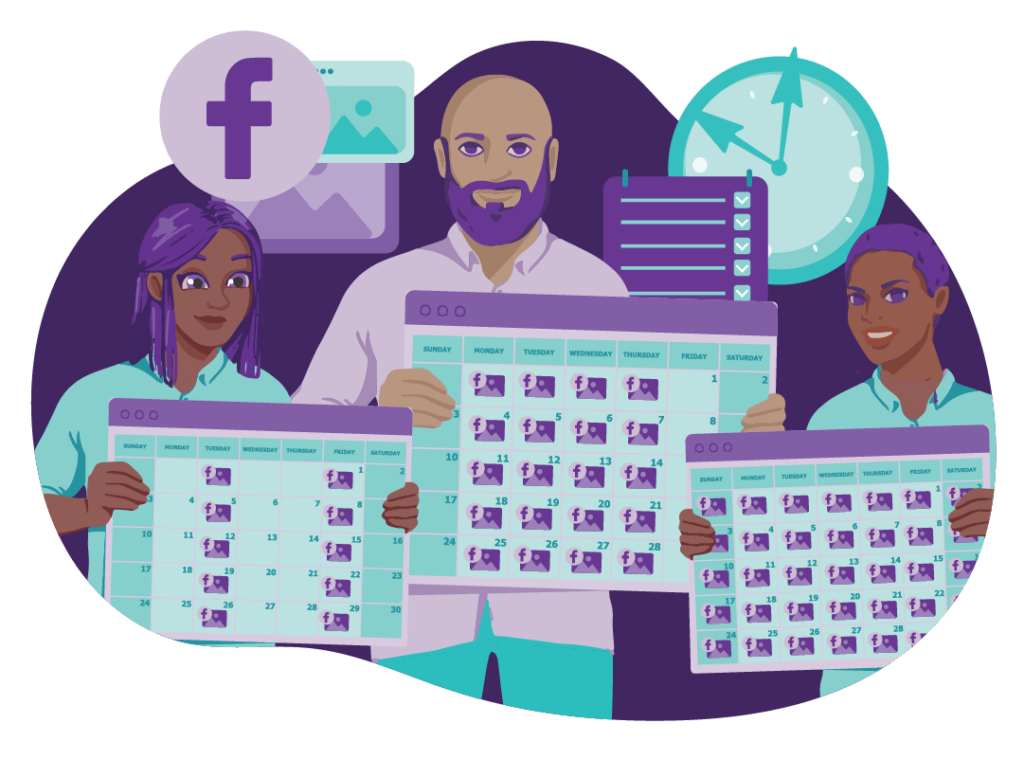
In general, people are most browsing and engaging on Facebook on weekdays at 3 am and mid-morning (8-11 am).
However, according to Sprout Social, which has put together a handy tool for visualising the statistically best times and days to post on each of the big 4 social media platforms by industry, there’s a lot of difference between industries. For instance, if you’re selling ‘consumer goods’ (broad I know), your best bet is to post to Facebook on Fridays around 10 am. This agrees with what I’ve seen with my eCommerce clients — that people tend to place orders for general products on Friday mornings because they’re thinking about what they’re going to do on the weekend. (Which isn’t that intuitive because ordering on a Friday means they’ll likely have to wait till the next weekend to use their new stuff, so it just goes to show that many people don’t plan far enough in advance.) So, if you’re an eCommerce brand, posting specials to Facebook at around 10 am on a Friday could be a good move.
In terms of frequency, most small businesses will get the best results from posting 2-7 posts per week. Don’t listen to those sites recommending you post 1-2 times per day. That can be helpful for big businesses with huge followings, but it’s rarely a useful approach for small businesses with smaller followings.
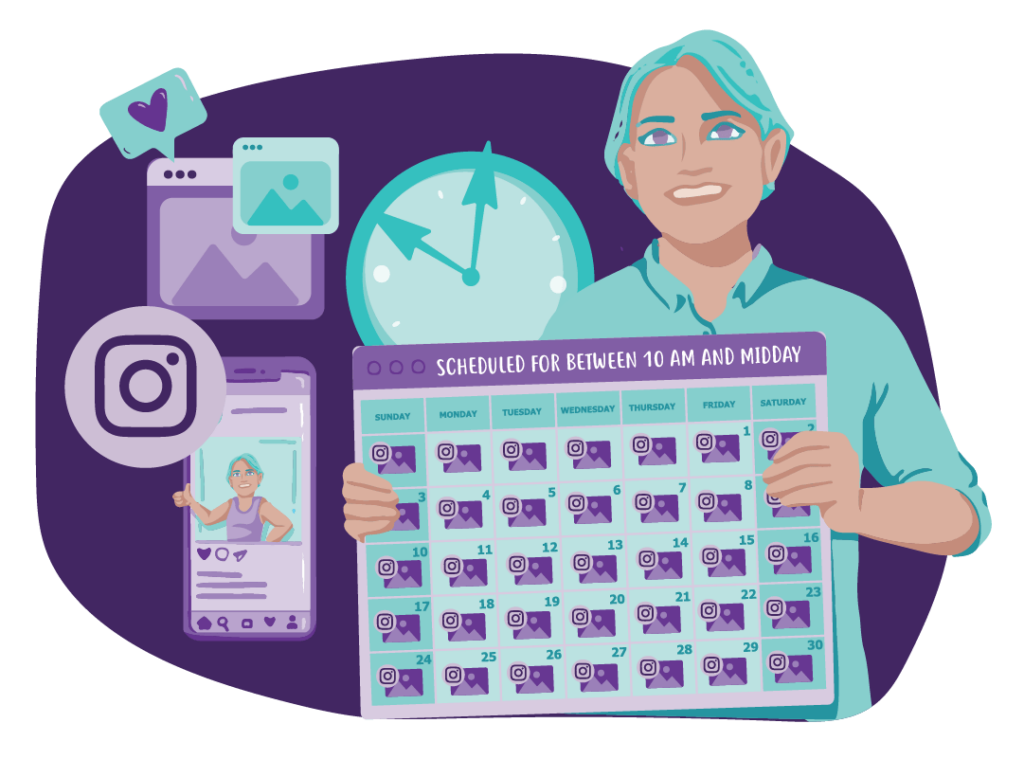
As with Facebook, the average Instagram user is most active on weekdays, though the best time to post is typically a little later in the morning, from 10 am – midday. However, you’ll probably get decent engagement from 8 am – 4 pm.
Again, as with Facebook, the best days and times to vary substantially across industries, but they don’t necessarily mirror Facebook. For example, consumer goods brands tend to get the best results from posting to Instagram between 3-5 pm on a Sunday.
One post per day is a good place to start when investigating the best frequency for your brand.
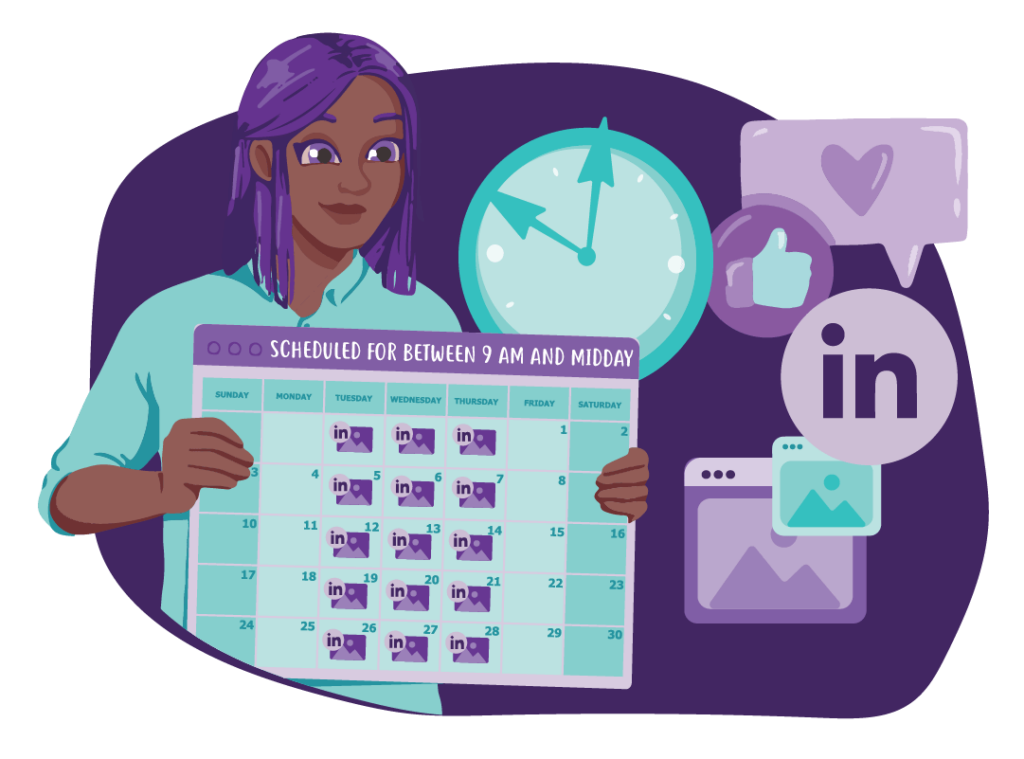
Unsurprisingly, given the professional nature of the platform, far more people are engaged on LinkedIn on weekdays than on weekends. Tuesday to Thursday is a little better than Monday and Friday. And the best times for engagement tend to be 9 am – midday.
Unlike for Facebook and Instagram, the best posting days and times don’t vary much across industries on LinkedIn.
If you can post 20 times a month, that’s generally a good place to start. But you can still get good results from posting once a week.
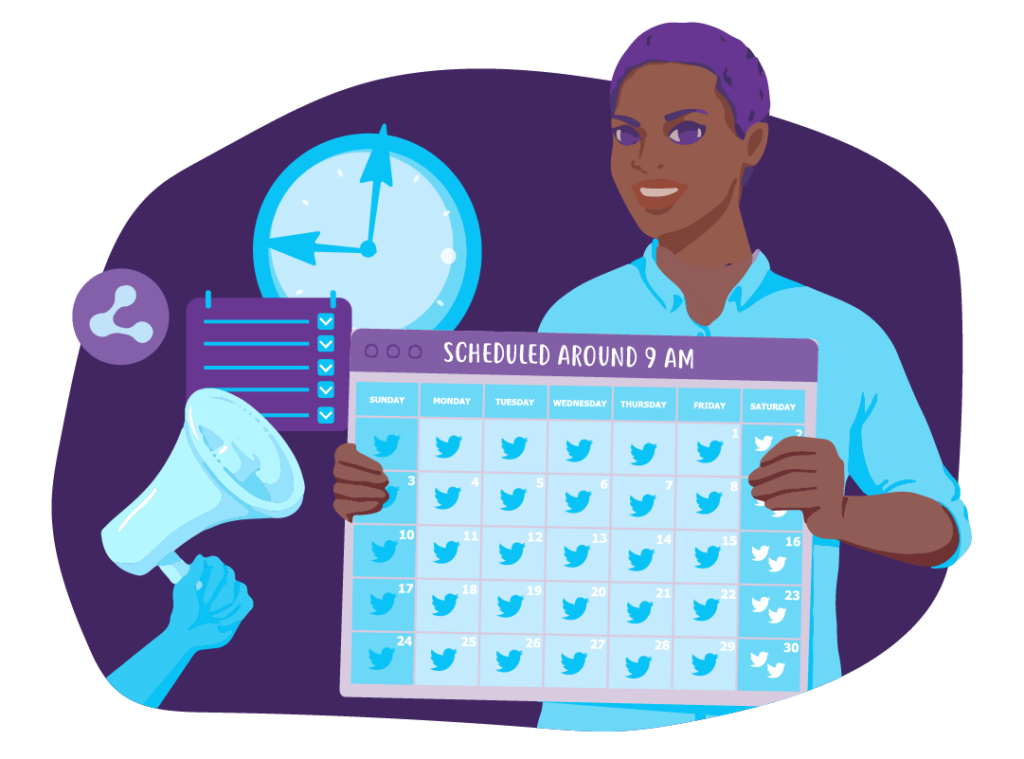
A lot of Twitter users tend to be most active when they first get to work, though they’re generally also quite active on Saturdays and are less active on Thursdays. However, there’s once again a lot of variation across industries.
Tweets have a lifetime of about 20 minutes, so you’re more likely to reach more of your audience if you post multiple times during the day. Most small businesses will get good results from posting 1-2 times per day on Twitter. In general, you’re not likely to get a good return on your investment if you post more than 3-6 times a day — except during special events or when something newsworthy is happening.

While it’s no longer ideal to post 30 pins a day on Pinterest, brands still tend to get the best engagement by posting 1-2 handfuls of pins each day. And that doesn’t count re-pins, which Pinterest now deprioritises.
The time of day is far less important on Pinterest, because if you’re posting 10 pins a day, you’re going to end up posting most hours your customers are awake. However, the very best days and times tend to be Friday evenings and weekends because many users are looking for inspiration for hobbies and personal projects, so they’re using Pinterest outside of work hours.
TikTok
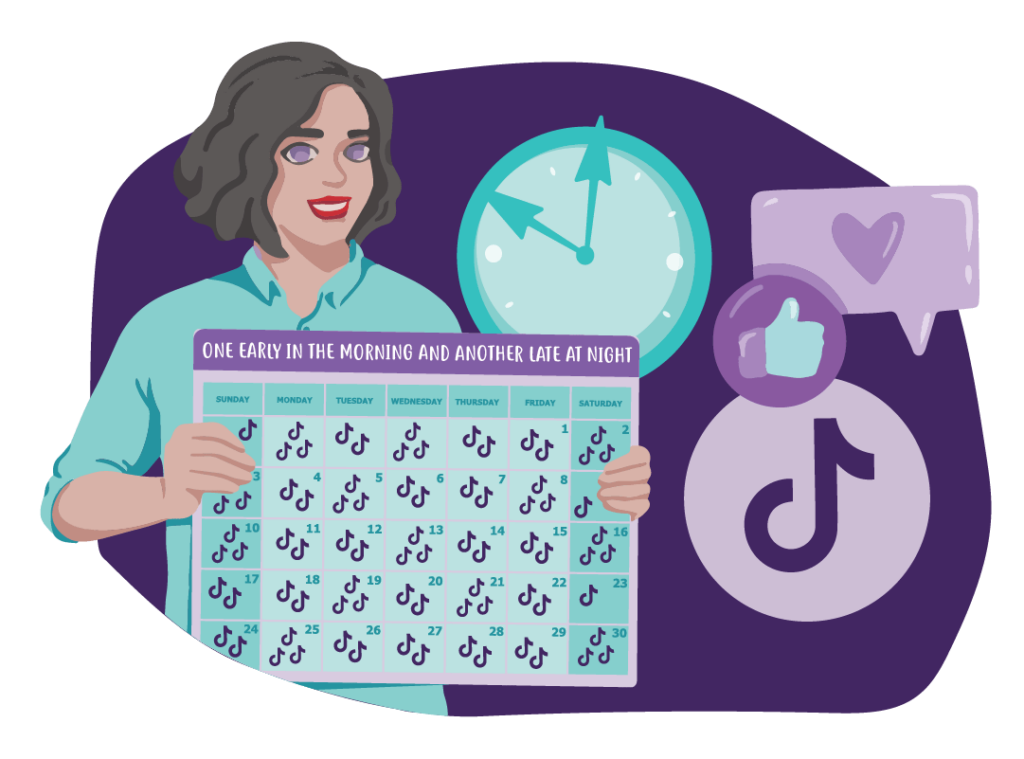
Most small businesses can generate good results by posting 2-3 times per day on TikTok. Users tend to be most engaged when they first get up and just before they go to bed on weekdays. As a newer kid on the block, engagement trends tend to be pretty fluid, so it’s especially important to keep experimenting on TikTok.
Snapchat
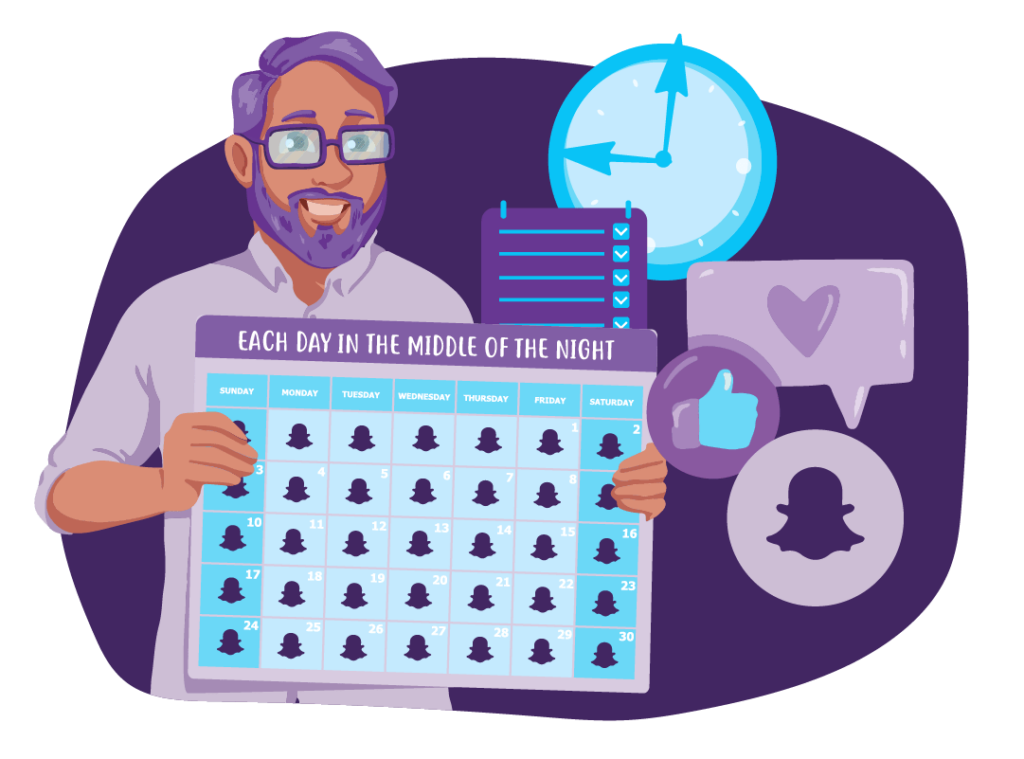
Snapchat users are a bit of an outlier as they tend to be most active on the platform at night before bed (or when procrastinating from sleep, or when out on the town).
YouTube
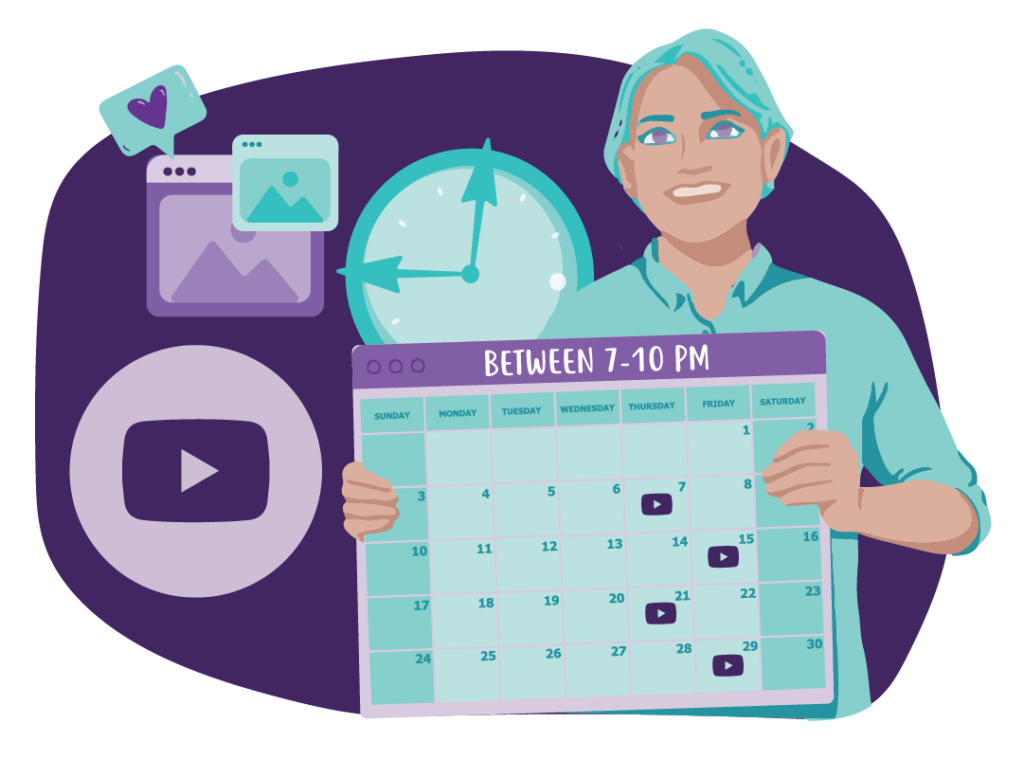
YouTube users tend to watch videos in the evenings, so you may get better results from posting between 7-10 pm. The days don’t seem to matter much, though people watch even more YouTube content on the weekends, so you may find you get better results if you post on a Thursday or Friday.
However, until people subscribe to your channel, YouTube acts more like a search engine than a social platform in that it can take longer for new content to be indexed by the YouTube algorithm. So, the time you post only really matters to those who’ve subscribed to your channel. And that means you can get good data about the best times to post new videos by looking at the times most of your users subscribe to your videos.
A new video once a week is often a good goal to aim for for small businesses.
Don’t forget about conversations

This data only applies to posts and conversations you initiate. If someone replies to a tweet, your subsequent replies don’t count towards your post count. Similarly, comments on posts on others platforms don’t count as posts for the purposes of these statistics.
However, replying to comments and tweets is a vital part of social media. If you ignore your audience, they’ll not only disengage, they’ll be turned off your brand.
Be consistent
Regardless of when and how often you post to your chosen social media platforms, the best thing you can do is to be consistent. Once your audience knows to expect your content at a certain time on certain days, they’ll look out for it and be more likely to see it. So, don’t make things hard for them by randomising your posts.
References
In compiling this post, I referenced the data on the following pages, along with data I gathered from our own work with clients.
- https://sproutsocial.com/best-times-to-post/
- https://howsociable.com/blog/best-time-to-post-on-youtube/
- https://adespresso.com/blog/best-time-to-post-on-facebook/
- https://www.mediapost.com/publications/article/199078/to-win-on-pinterest-unlearn-the-social-rules.html
- https://blog.bufferapp.com/how-often-post-social-media
- https://blogs.constantcontact.com/how-often-post-social-media/
- https://dowsocial.com/how-often-you-should-post-on-social-media-platforms/
- https://vivial.net/blog/social-media-mistakes/
- http://buzzsumo.com/blog/ultimate-guide-facebook-engagement-2017/
- http://www.marismith.com/8-facebook-engagement-stats-every-marketer-needs-to-know/
